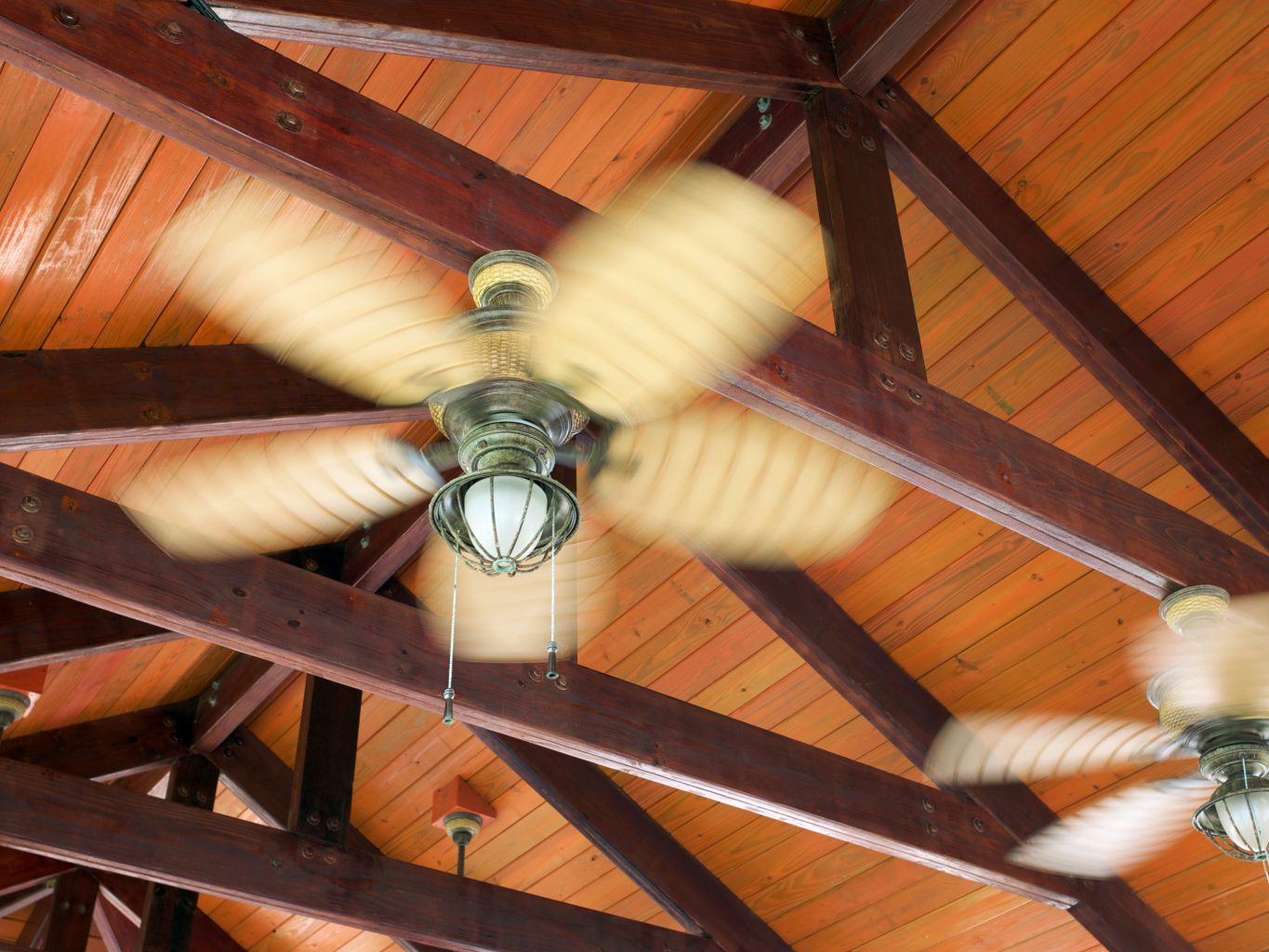By James Dulley, dulley.com
Proper ventilation, both from outdoors and within your house, can make you feel cooler and reduce your air-conditioning. The room air temperature in your home actually is not most important — the cooling sensation on your skin is. Human nature being what it is, people often incorrectly perceive comfort level by the temperature setting.
Moving air feels many degrees cooler than still air at the same temperature allowing you to set the air conditioner thermostat a few degrees lower. This is partially due to the fact that more heat is transferred from your skin to moving air. Also, as air flows over your skin, moisture evaporates even if you are not noticeably sweating and this feels cooler.
There are two types of ventilation. One is moving indoor air throughout your house with the windows closed. In addition to making you feel cooler, it can balance out room temperatures and actually lower the temperature in some rooms and raise it in others. The other type of ventilation is bringing in outdoor air at times and shutting off the central air-conditioning. Both have their places and can be effective.
Installing a ceiling paddle fan is what is commonly thought of as indoor ventilation and it does work well. Run the ceiling fan on medium or high speed with the air blowing down to create a direct breeze on your skin. During the winter, reverse the blade rotation and run it on low speed. This gently circulates the warm air around the room without creating a chilly breeze.
Select the proper-size ceiling fan or you will just waste electricity and gain little comfort. A sizing rule of thumb for a lower-cost four- or five-blade fan is (room size versus diameter of blades):
• Up to 75 square feet: 36 inches
• 75 to 144 square feet: 36 to 42 inches
• 144 to 225 square feet: 44 to 50 inches
• 225 to 400 square feet: 50 to 54 inches
Although running any electric fan can make your feel cooler, it does not cool the room. It actually heats the room air because all the electricity used ends up as heat. When no one is in a room to feel the cooling breeze, switch off any electric fan, including ceiling fans. Each kilowatt-hour of electricity used by a fan produces 3,414 Btu of heat which your central air-conditioner has to remove.
Small personal fans can be very effective to create a breeze directly on you while you sit in a chair or work at one location. If you purchase a small fan, select one that can also be used as a zoning space heater during winter. The heating elements do not block much air flow in fan-only operation.
Also, select a multi- or variable-speed fan with a wide range of speeds. Your fan should provide a comfortable breeze at 10 feet away on high speed. You should feel just a slight air movement at 3 feet away on low speed. A horizontal, reversible dual window fan provides an even wider range of ventilation options for comfort.
Vornado offers small personal fans with cageless soft blades that will not harm your skin if you bump it and is foldable for portability. Dewalt offers a variable-speed cordless fan with a rechargeable 20-volt lithium-ion battery. It can run for seven hours at maximum speed with 500 cubic feet per minute (cfm). Move it with you from room to room.
Setting your air central air conditioner blower to “on” can help balance out room temperatures, but it will not create much of a cooling breeze. Standard blower motors are powerful and running one continuously heats the air. Variable-speed ECM blower motors use less electricity on continuous low speed, so running these blower makes more sense.
Natural outdoor ventilation is effective and free. An effective tip is when you open double-hung windows or an entry door with a storm/screen door, open both the top and bottom sashes a little. This creates a natural vertical air flow, even on a still day, which will mix with the indoor air.
Sit near a window on the windward side of your home — on the first floor if you have a two-story home — and open the window just slightly. Open the windows much wider on the other side of the home — on the second floor of a two-story home. This creates a higher velocity of incoming air for a stronger breeze.
James Dulley writes utility bill cutting and general money-saving magazine articles and writes nationally syndicated $ensible Home and Cut Your Utility Bills columns for 200 newspapers and magazines.

